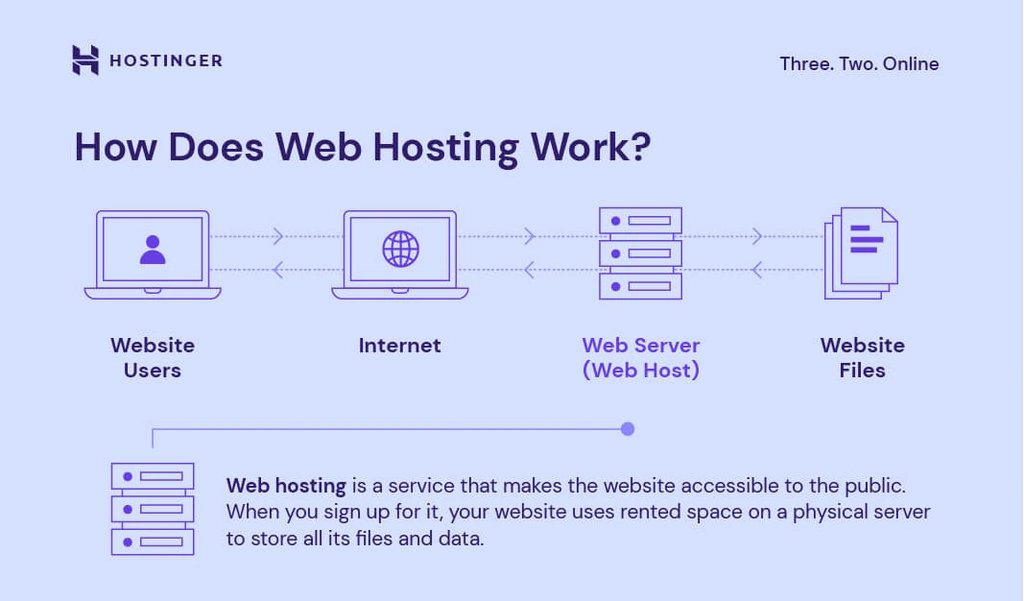- Published on
What Is Web Hosting?
- Authors
- Name
- Full Stack Engineer
- @fse_pro

Web hosting is a crucial aspect of making websites accessible on the internet. As experienced programmers, it's important to have a solid understanding of web hosting concepts and the technologies behind them. In this technical guide, we will explore the concept of web hosting, explain key terms and technologies, and provide clear explanations using TypeScript code samples.
What Is Web Hosting?
Web hosting refers to the process of storing and serving website files on a server, making them accessible to users through the internet. A web hosting provider offers server space and infrastructure to store website files, ensuring they can be accessed reliably and efficiently.
Types of Web Hosting
Shared Hosting: In shared hosting, multiple websites are hosted on the same server and share its resources, such as CPU, memory, and storage. This hosting option is cost-effective but may have limitations on performance and scalability.
Virtual Private Server (VPS) Hosting: VPS hosting provides virtualized server instances with dedicated resources. Each VPS operates independently, allowing more control, scalability, and performance compared to shared hosting.
Dedicated Server Hosting: With dedicated server hosting, an entire physical server is dedicated to a single website or client. This option offers the highest level of performance, control, and customization but comes at a higher cost.
Cloud Hosting: Cloud hosting utilizes a network of interconnected servers to host websites. It offers scalability, flexibility, and high availability by distributing resources across multiple servers.
TypeScript Code Sample: Deploying a Website to a Server
Let's see an example of deploying a website to a server using TypeScript:
// TypeScript code sample to deploy a website to a server
const deployWebsite = (files: string[], server: string) => {
// Connect to the server
const connection = connectToServer(server)
// Upload files to the server
uploadFiles(connection, files)
// Restart the server to apply changes
restartServer(connection)
}
deployWebsite(['index.html', 'styles.css', 'script.js'], 'example.com')
Technologies Behind Web Hosting
Web hosting involves various technologies and components. Here are some key terms to familiarize yourself with:
HTTP: The Hypertext Transfer Protocol (HTTP) is the protocol used for communication between web browsers and web servers.
Domain Name System (DNS): DNS translates domain names into IP addresses, allowing browsers to locate web servers.
Web Servers: Web servers, such as Apache HTTP Server or NGINX, receive and respond to HTTP requests, serving website files to clients.
FTP and SFTP: File Transfer Protocol (FTP) and Secure File Transfer Protocol (SFTP) are protocols used to transfer website files between local machines and servers.
Content Delivery Network (CDN): CDNs store copies of website files in multiple locations worldwide, improving performance by serving files from the nearest location to the user.
Conclusion
To further deepen your understanding of web hosting, here are some top resources worth exploring:
- Mozilla Developer Network (MDN): MDN provides comprehensive documentation on web technologies, including web hosting-related topics.
- DigitalOcean Community: DigitalOcean's community tutorials cover various aspects of web hosting, server management, and deployment.
- Nginx Documentation: Nginx's official documentation offers in-depth guides on setting up and configuring the popular web server.
- Youtube: What is Web Hosting
Now that you have a solid understanding of web hosting, you can confidently choose the appropriate hosting solution, deploy websites to servers, and ensure reliable and performant web experiences.